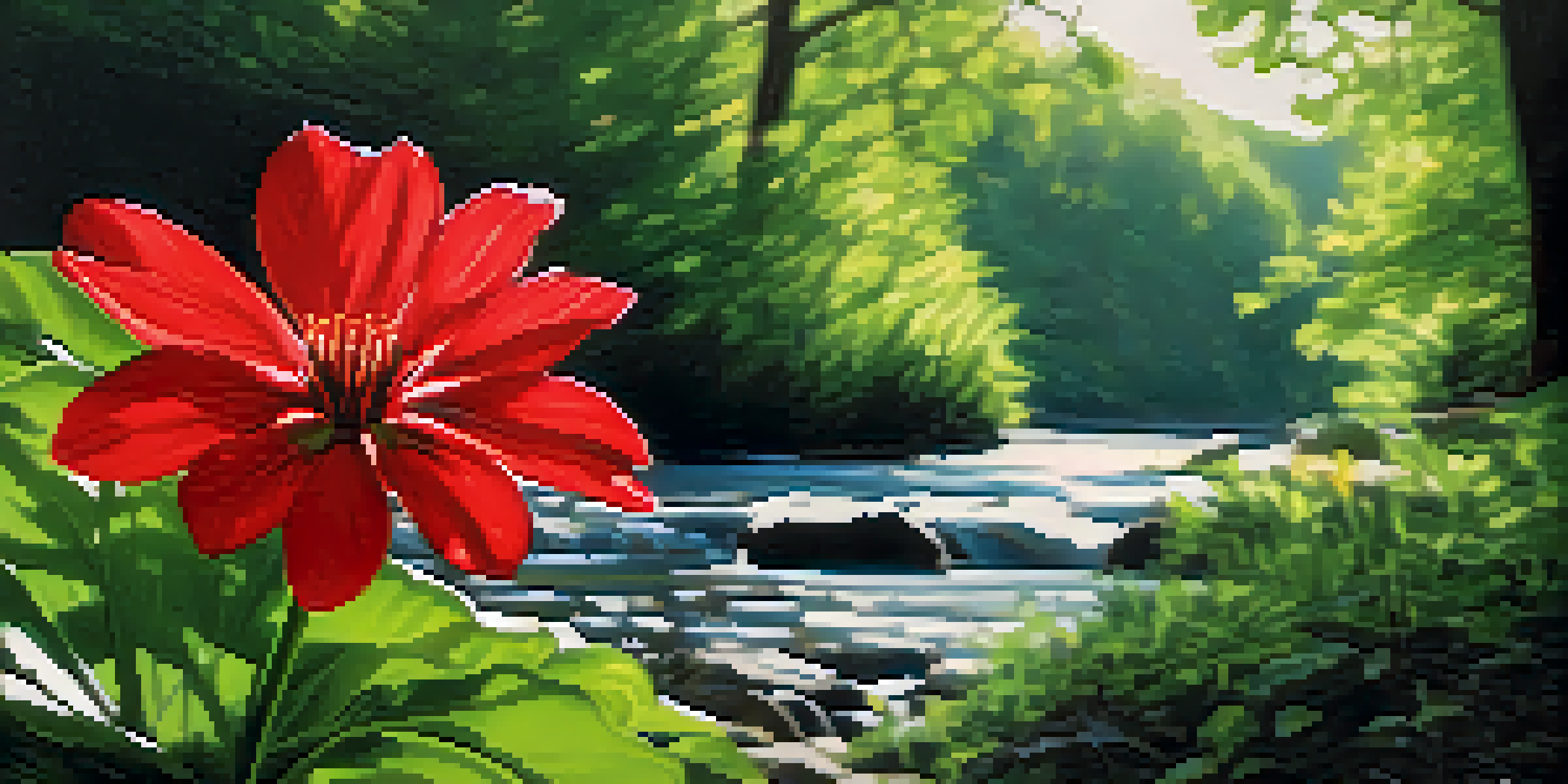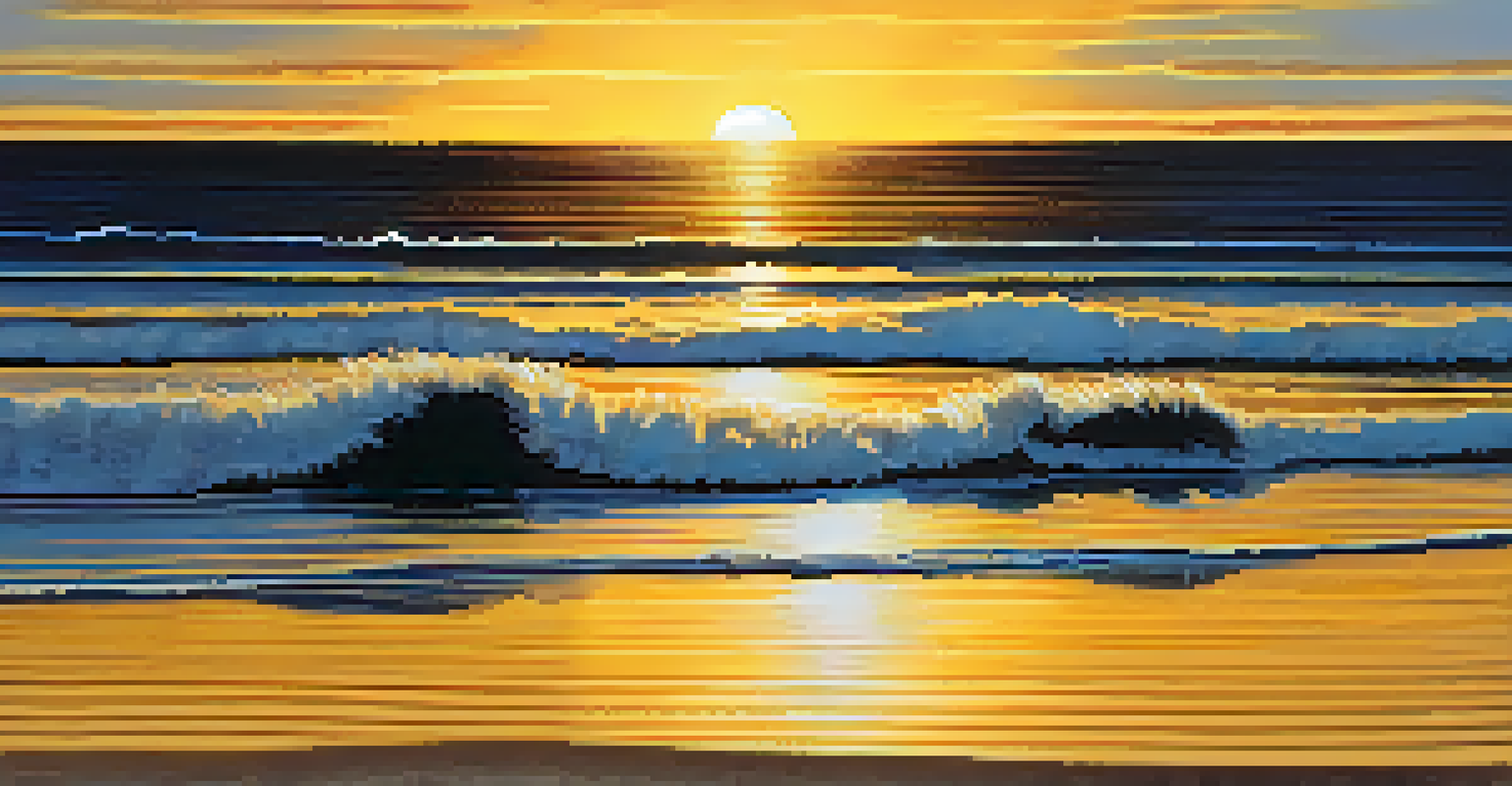The Role of Focal Points in Painting Composition Strategies

What Are Focal Points in Painting Composition?
Focal points are the areas in a painting that draw the viewer's eye first. Imagine walking into a gallery and being immediately captivated by a vibrant red flower in a landscape. That flower is the focal point, emphasizing its significance within the composition.
Every painting is a story, and the focal point is its main character.
In essence, focal points guide the viewer's attention and help convey the artist's message. They can be created through contrast, color, or placement, and they serve as the anchor around which the rest of the artwork revolves.
Understanding focal points is crucial for both artists and viewers, as they enrich the visual experience and provide context to the narrative within the painting.
The Importance of Focal Points in Composition
Focal points play a pivotal role in painting composition by establishing hierarchy. Think of it like a story: if every character is shouting, no one will be heard. The focal point allows one element to stand out, ensuring the viewer knows where to look first.

Moreover, focal points enhance the overall balance of a painting. They can direct the eye across the canvas, creating a flow that encourages exploration of the entire piece, much like a well-structured narrative leads the reader through a plot.
Focal Points Guide Viewer Attention
Focal points in a painting draw the viewer's eye, enhancing the visual experience and conveying the artist's message.
By strategically placing focal points, artists can manipulate emotions and reactions, making their work more engaging and memorable.
Techniques for Creating Effective Focal Points
Artists utilize various techniques to create effective focal points, one of which is contrast. By juxtaposing light against dark or warm colors against cool ones, artists can make specific elements pop, drawing attention instantly.
Color is the keyboard, the eyes are the harmonies, the soul is the piano with many strings.
Another technique is the use of leading lines, which guide the viewer’s gaze toward the focal point. Imagine a winding road in a landscape painting; it subtly directs your eye to a distant mountain, establishing a clear point of interest.
Finally, size and scale can also create focal points. A larger object in the foreground naturally draws the eye, serving as an anchor before the viewer explores the surrounding details.
The Role of Color in Highlighting Focal Points
Color is a powerful tool in highlighting focal points. Bright, saturated colors naturally attract attention, making them effective choices for focal elements in a composition. Think of a bright yellow sun against a blue sky; the sun instantly becomes the focal point.
Conversely, muted colors can recede into the background, allowing brighter colors to shine. This contrast helps to establish a visual hierarchy and ensures that the focal point stands out amidst the surrounding elements.
Techniques Enhance Focal Points
Artists use techniques like contrast, leading lines, and size to create effective focal points that engage viewers.
By thoughtfully choosing color palettes, artists can create dynamic focal points that not only attract the viewer's eye but also evoke emotions and set the tone for the entire piece.
Using Shape and Form to Establish Focal Points
Shapes and forms can also effectively create focal points in a painting. A unique or irregular shape can stand out against a backdrop of more uniform elements, capturing attention immediately. Imagine a circular object amidst a sea of angular shapes; it naturally draws the viewer's eye.
Additionally, artists can use symmetry and asymmetry to emphasize focal points. A perfectly symmetrical composition can lead the eye to the center, while asymmetrical arrangements can create tension and intrigue, guiding the gaze toward the focal area.
By playing with shape and form, artists can create engaging compositions that keep viewers interested and encourage them to explore the artwork further.
The Impact of Placement on Focal Points
Placement is another crucial aspect of creating effective focal points. The rule of thirds is a commonly used guideline where placing the focal point off-center can often lead to a more dynamic and interesting composition. This technique encourages a sense of movement and balance.
However, sometimes placing the focal point dead center can also be effective, especially in symmetrical compositions where balance is key. This approach can create a sense of stability and harmony, drawing the viewer's eye directly to the center.
Focal Points Convey Narrative Depth
By highlighting specific elements, focal points help convey narratives and themes, enriching the storytelling aspect of art.
Ultimately, how and where an artist places their focal point can significantly affect the viewer's experience and understanding of the painting.
Focal Points and Storytelling in Art
Focal points are not just about aesthetics; they play a significant role in storytelling within art. By directing attention to specific elements, artists can convey a narrative or theme, guiding the viewer through the emotional landscape of the piece.
For example, in a painting depicting a crowded market, a focal point might be a single person in distress, drawing attention to a particular story amidst the chaos. This makes the viewer stop, reflect, and engage with the deeper meaning of the artwork.

Through the thoughtful use of focal points, artists can create compelling visual stories that resonate with viewers long after they leave the canvas.